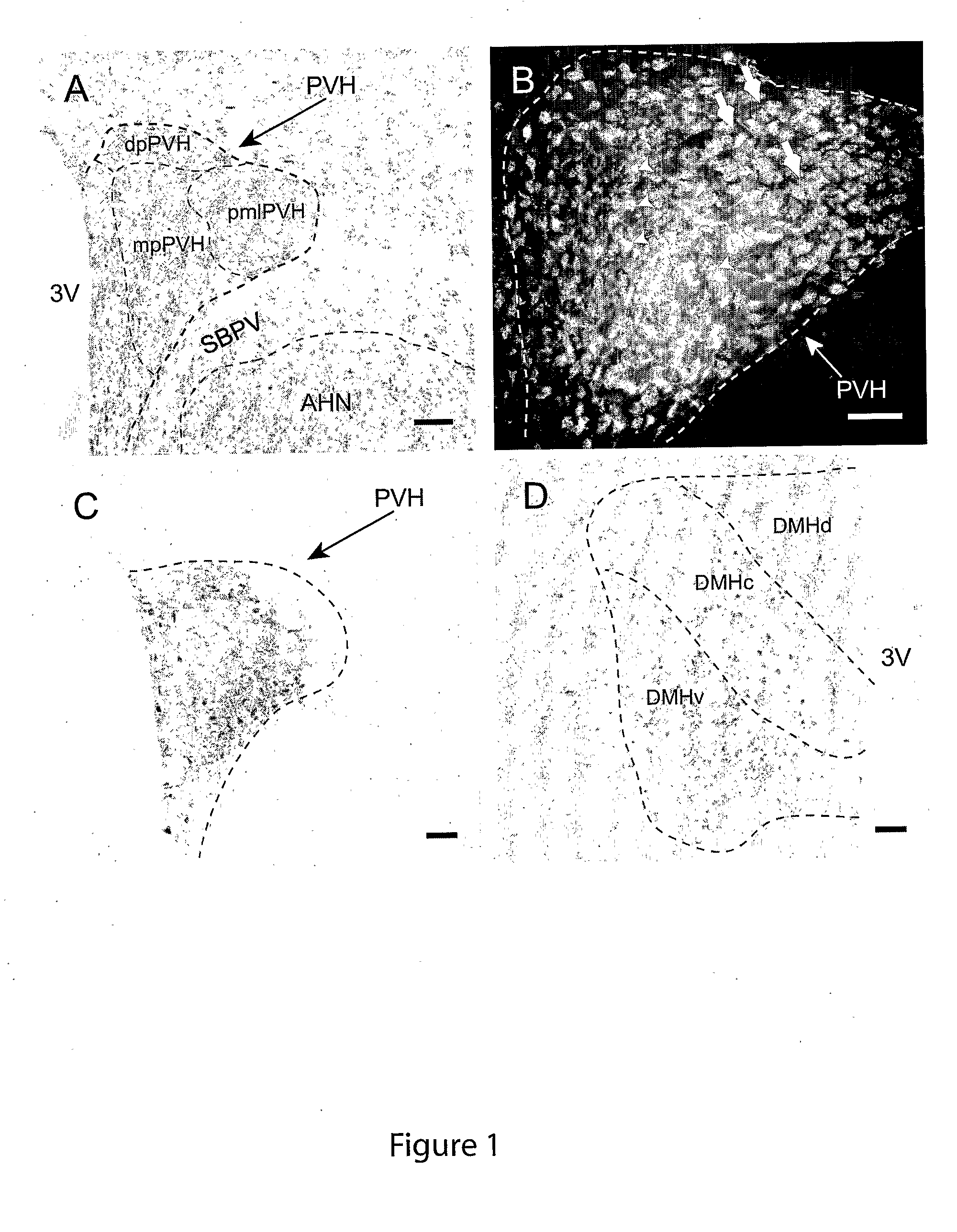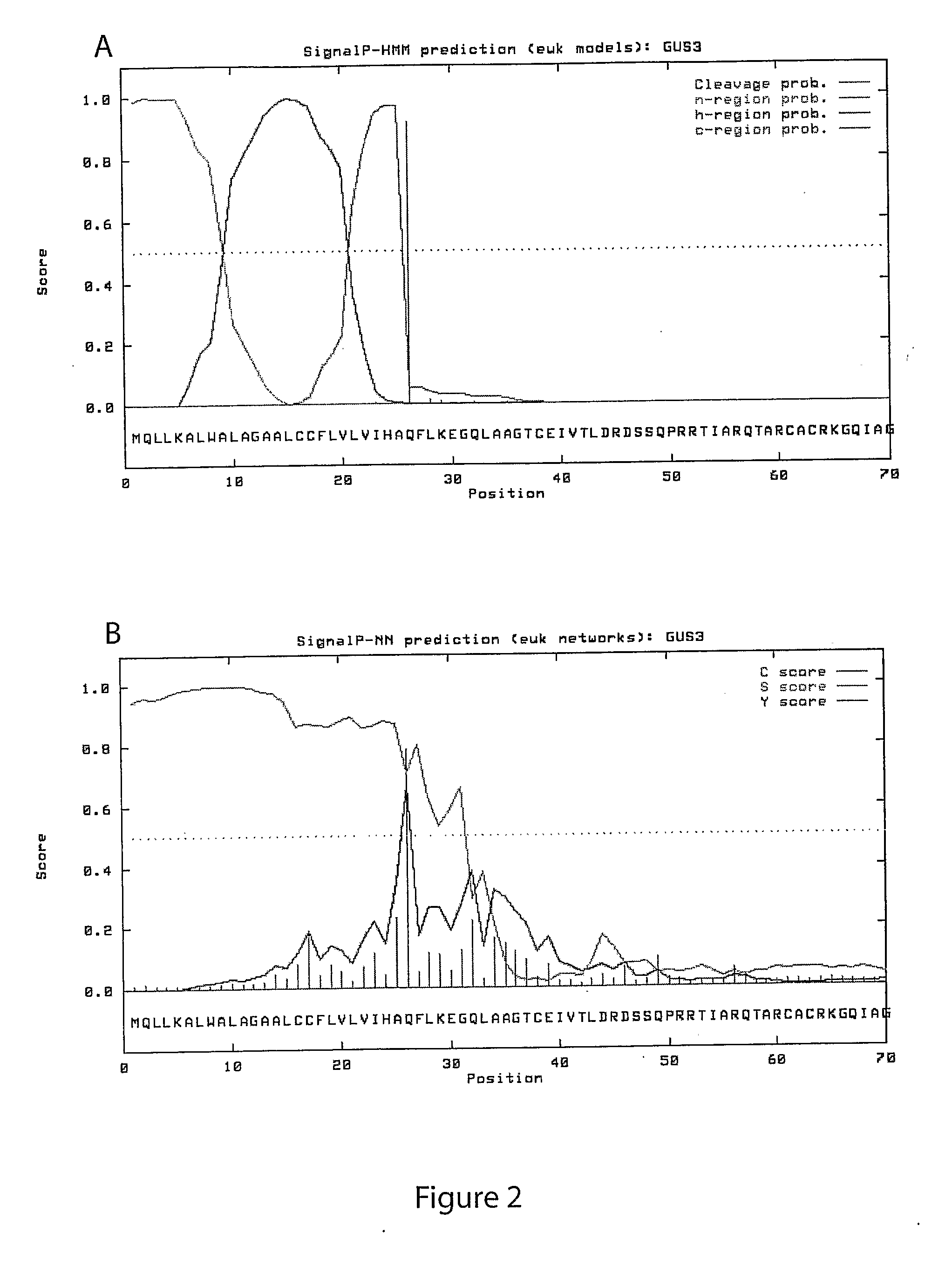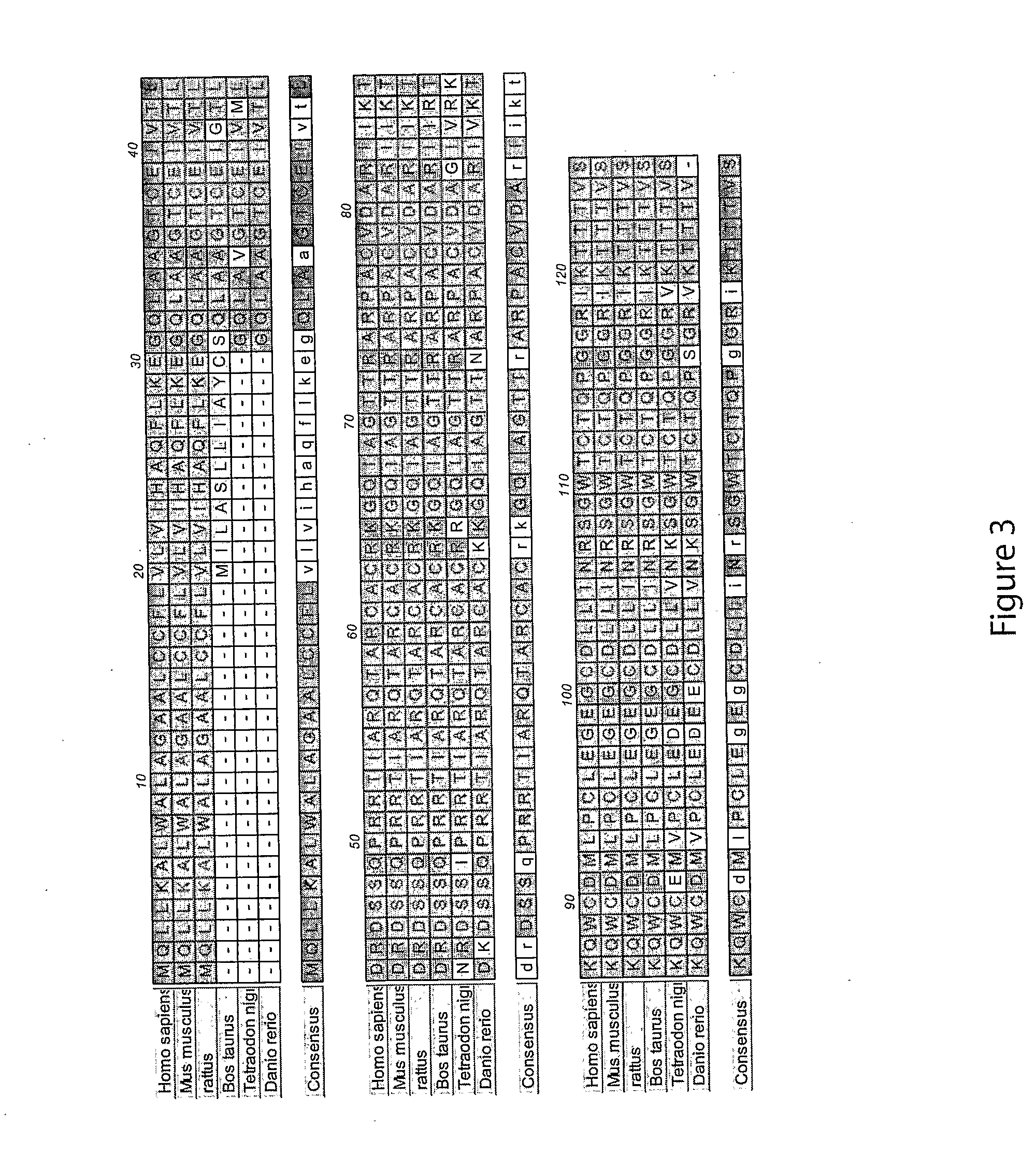Gus3 neuropeptides for regulating hypothalamic function
a neuropeptide and hypothalamus technology, applied in the field of neuropeptides and peptide hormones, to achieve the effect of reducing stress effects
- Summary
- Abstract
- Description
- Claims
- Application Information
AI Technical Summary
Benefits of technology
Problems solved by technology
Method used
Image
Examples
example 1
Prediction of Signal Peptide Sequences and Cleavage Sites in GUS3
[0076]The GUS3 sequence, Genbank accession number NP—598857, was analysed using the SignalP server (www.cbs.dtu.dk / services / SignalP-2.0 / SignalP). The SignalP server predicts the presence and location of signal peptide cleavage sites in amino acid sequences. The method employs a prediction of cleavage sites and a signal peptide / non-signal peptide prediction based on a combination of several artificial neural networks and hidden Markov models [19].
[0077]The analysis of GUS3 [A] gave the following results (see also the graphic output from the analysis in FIG. 2):
[0078]Neural networks based part:
>GUS3 length=70
# Measure Position Value Cutoff signal peptide?
max. C260.7880.33YESmax. Y260.6710.32YESmax. S90.9980.82YESmean S1-250.9350.47YES
# Most likely cleavage site between pos. 25 and 26: IHA-QF
[0079]Hidden Markov Models based part:
>GUS3
[0080]Prediction: Signal peptide
Signal peptide probability: 0.987
Signal anchor probabilit...
example 2
Evolutionary Conservation of GUS3
[0083]Homologues of the GUS3 polypeptide were found by searching with the BLAST and BLAT programs, and aligning the found polypeptide sequences or the translated genomic or cDNA sequences originating from mouse, rat, cow, zebrafish (Danio rerio), and green spotted pufferfish (Tetraodon nigroviridis) (FIG. 2) using the ClustalW algorithm [21] embedded in the DSGene program suite (Accelrys Inc.).
[0084]The GUS3 gene is amazingly highly conserved throughout evolution. Thus, the amino acid sequence of GUS3 is completely conserved from human to mouse and rat, whereas only a few substitutions are seen between mammal and fish GUS3 sequences. Most of these substitutions are conservative substitutions resulting in the substitution of amino acid residues with other amino acid recidues with similar chemical properties. The amino acid sequence from position 30 to 125 harbours e.g. 2 substitutions between Bos taurus to the other mammals.
[0085]The high degree of co...
example 3
Identification of GUS3 mRNA Expressing Tissues by Multiplex PCR
[0092]The procedure is based on methods described previously by Jensen et al. [22].
[0093]Fresh tissue samples from: ileum, duodenum, stomach, adrenal gland, kidney, lung, liver, hypothalamus, whole brain, heart, muscle, testis, colon, jejenum, interscapular brown adipose tissue, mesenteric white adipose tissue, epididymal white adipose tissue, perirenal white adipose tissue, inguinal white adipose tissue, and spleen were isolated from Sprague-Dawley rats and immediately submerged in RNAlater (Ambion, Tex., U.S.A.).
[0094]Total RNA was then extracted from the tissue samples and from rat pancreatic β-cell containing islets, from NHI GI28 insulinoma, and from a glucagon producing cell lines (12C3AN) using RNeasy spin columns (QIAGEN Inc., California, USA), following the manufacturer's instructions.
[0095]First-strand cDNA was prepared using 1 μg total RNA, the Superscript RT kit, and random hexamer primers (GIBCO BRL, Gaither...
PUM
| Property | Measurement | Unit |
|---|---|---|
| Pressure | aaaaa | aaaaa |
| Body weight | aaaaa | aaaaa |
Abstract
Description
Claims
Application Information
 Login to View More
Login to View More - R&D
- Intellectual Property
- Life Sciences
- Materials
- Tech Scout
- Unparalleled Data Quality
- Higher Quality Content
- 60% Fewer Hallucinations
Browse by: Latest US Patents, China's latest patents, Technical Efficacy Thesaurus, Application Domain, Technology Topic, Popular Technical Reports.
© 2025 PatSnap. All rights reserved.Legal|Privacy policy|Modern Slavery Act Transparency Statement|Sitemap|About US| Contact US: help@patsnap.com



